橡膠輪
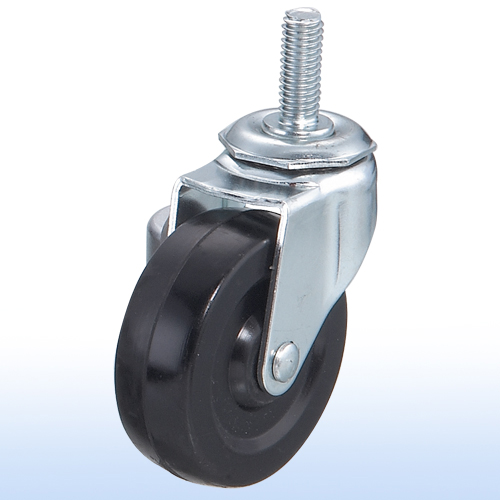 橡膠輪
橡膠輪
橡膠輪
輕型腳輪
2-1/2”x 7/8 活動煞車輪
型號: T-01
2-1/2”x 7/8 Swivel Caster w/Brake
東鉝實業股份有限公司
電話:04-723-2230
傳真:04-723-6990
彰化市桃源街25巷7號
實心橡膠輪:這種輪胎是由純橡膠或聚氨酯製成,無需充氣,並且非常耐用。這些輪胎通常用於手推車、推車和工業設備上。
彈性輪胎:這種輪胎是一種特殊的固體橡膠輪,由彈性橡膠製成,具有良好的彈性和緩衝效果。這些輪胎通常用於堆高機、叉車和其他需要運輸貨物的工業車輛上。
高溫橡膠輪:這種輪胎是由耐高溫橡膠製成,可以承受高溫環境下的使用,例如烤爐、高溫烤箱和工業爐灶等場合。
聚氨酯橡膠輪:這種輪胎由聚氨酯材料製成,具有非常好的耐磨性、耐腐蝕性和耐油性。這些輪胎通常用於各種設備和工業車輛上。
橡膠輪在許多不同的應用中都非常常見,例如輪椅、機器人、辦公椅和運動器材等。無論是哪種應用,選擇正確的橡膠輪尺寸、形狀和硬度都非常重要,以確保最佳性能和耐用性。
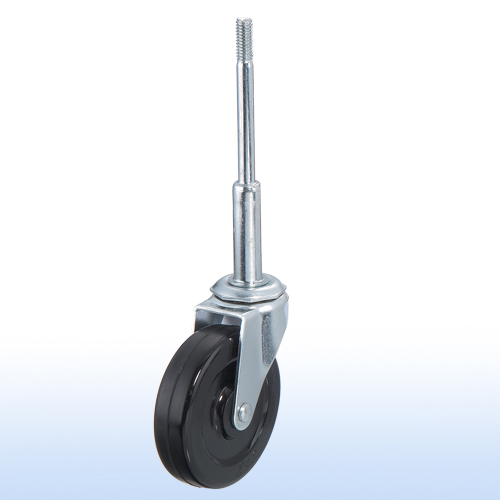 橡膠輪
橡膠輪
橡膠輪
輕型腳輪
3”x 7/8 長桿活動煞車輪
型號: T-02
3”x 7/8 Extra-long-post Swivel Caster w/Brake
橡膠輪
橡膠輪是由橡膠製成的輪子,通常應用在各種不同的運輸工具、機械設備、家具、車輛等場合。橡膠輪的主要特點是具有良好的緩震降噪性能和適應性,這使得它們在許多場合中成為首選。
【主要特點與優勢】:
緩震降噪:橡膠輪具有較好的彈性和緩衝性能,能夠有效吸收地面震動和噪音,減少運輸和運動過程中的振動和聲響。
適應性強:橡膠輪能適應多種地面狀況,包括平整地面、不平整地面、堅硬地面和柔軟地面,因此適用範圍廣泛。
輕巧靈活:相對於金屬輪子,橡膠輪較為輕巧,使得機器設備和運輸工具更靈活和易於操作。
不損傷地面:橡膠輪的柔軟性使其不易對地面造成損傷,適用於各種地板表面,特別是對於木質地板和瓷磚地面等較脆弱的地面。
【應用場景】:
橡膠輪廣泛應用於各個領域,常見的應用場景包括但不限於以下:
物流運輸:橡膠輪常用於手推車、平台車、堆高機、搬運車等,用於方便地運輸各種物品,尤其是在倉庫、物流中心和生產線上。
家具:橡膠輪經常用於家具的腳輪,如椅子、桌子、辦公家具等,使家居環境中的家具更容易移動。
工業設備:橡膠輪廣泛用於工業設備,例如工作台、機器設備、車間工具等,提供方便的移動和操作。
醫療設備:在醫療行業中,橡膠輪常用於醫療床、輪椅、醫療器械等,確保醫療設備的靈活性和舒適性。
【選擇與注意事項】:
選擇橡膠輪時,需要根據具體應用場景和需求來進行選擇,並注意以下事項:
負載限制:根據橡膠輪的負載能力選擇合適的輪子,不要超過其承載能力,以避免橡膠輪損壞或使用不當導致安全問題。
地面狀況:在選擇橡膠輪時,要考慮工作環境的地面狀況,以確保橡膠輪能夠順利運行。
材質:不同的橡膠輪材料適用於不同的環境和用途,如耐油、耐化學藥品等。
定期檢查:定期檢查橡膠輪的狀況,特別是輪胎部分,確保沒有磨損、裂紋或其他損壞。
總體來說,橡膠輪的特點使其在許多應用場所中都得到廣泛使用。在選擇和使用橡膠輪時,要根據具體的應用需求和場所條件,合理選擇輪子的尺寸和材質,確保其良好的性能和壽命。同時,在使用過程中,定期檢查和保養橡膠輪,注意安全使用,也是非常重要的。
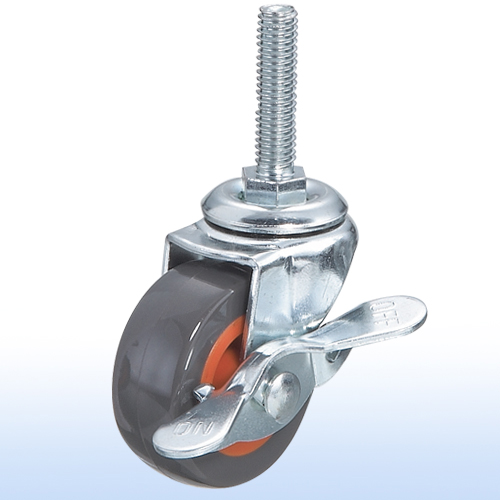 橡膠輪
橡膠輪
橡膠輪
輕型腳輪
2”x 7/8 活動煞車輪
型號: T-03
2”x 7/8 Swivel Caster w/Brake
為了確保橡膠輪的良好性能和長久使用,定期的維護與保養是必不可少的。以下是一些關鍵的維護措施:
清潔:定期清潔橡膠輪,特別是在使用環境較骯髒或塵土較多的場合。保持輪胎和輪輞的清潔,可以防止灰塵和污垢累積,影響運轉和摩擦效果。
定期檢查:定期檢查橡膠輪的狀況,特別是輪胎的磨損和裂紋情況。如果發現磨損或損壞,應及時更換,以避免輪胎在使用過程中突然損壞造成安全風險。
避免過載:避免將輪子用於超出其承載能力的負載,這可能會造成橡膠輪的損壞和變形。
避免長時間停留在潮濕或潛在腐蝕環境:橡膠輪如果長時間停留在潮濕的環境中,可能會影響其性能,甚至導致腐蝕。因此,在潮濕的環境下,應該避免長時間停留。
【橡膠輪與其他材質輪子的比較】:
在選擇輪子時,橡膠輪與其他材質輪子相比具有一些優勢和劣勢:
橡膠輪與金屬輪:相比金屬輪,橡膠輪具有更好的緩震降噪性能,不會對地板造成傷害,適用於一些對地板保護要求較高的場所。然而,橡膠輪的承載能力通常較金屬輪較低。
橡膠輪與尼龍輪:相比尼龍輪,橡膠輪具有更好的彈性,能夠適應不平坦的地面,而尼龍輪則更適合於平滑地板上的運動。
橡膠輪與聚氨酯輪:相比聚氨酯輪,橡膠輪的價格通常較為經濟,但聚氨酯輪擁有較高的承載能力和耐磨性。
【結論】:
橡膠輪作為一種常見的工業用輪,具有良好的緩震降噪性能和適應性,廣泛應用於各種場合。在使用橡膠輪時,定期的維護和保養是確保其良好性能和長壽命的關鍵。同時,在選擇輪子時,需要根據具體的應用需求和環境特點,選擇合適的輪子材質和規格。透過科學合理的選擇和正確的使用,橡膠輪將持續發揮其重要的運輸和運作功能,為各行業帶來便利和效益。
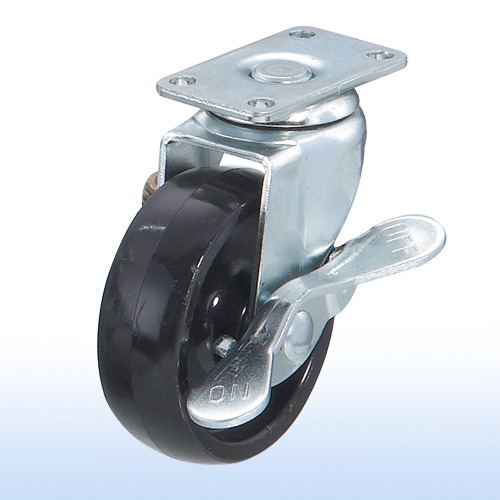 橡膠輪
橡膠輪
橡膠輪
輕型腳輪
2-1/2”x 7/8 長板活動煞車輪
型號: T-04
2-1/2”x 7/8 Swivel Caster w/Strip Brake
隨著科技的不斷發展,橡膠輪也在不斷進步和創新,以滿足不斷變化的需求和應用場景。以下是橡膠輪的一些進步與創新:
高性能橡膠材料:傳統的橡膠材料已經得到改良和優化,研發出更多高性能的橡膠材料。這些材料可以提供更優越的耐磨性、抗油性、耐高溫性等特性,使橡膠輪在各種極端環境下都能表現出色。
智能化應用:橡膠輪與智能技術的結合,使得橡膠輪可以實現自動監測和遠程控制。例如,在物流運輸中,橡膠輪配備智能傳感器,能夠實時監測負載狀態、地面狀況和輪子狀態,實現更智能的運輸和管理。
無軌迹設計:一些新型的橡膠輪設計採用了無軌迹結構,能夠減少地面擦痕,提高輪子在地面上的滾動靈活性。
環保和可持續性:一些橡膠輪製造商注重環保和可持續性,開發出可回收、可再生的橡膠材料,並提倡綠色生產和綠色應用,以減少對環境的影響。
定制化服務:隨著客戶需求的多樣化,一些橡膠輪製造商提供定制化服務,根據客戶的具體需求和應用場景,提供量身定制的橡膠輪產品。
【挑戰與解決方案】:
雖然橡膠輪不斷進步與創新,但仍然面臨一些挑戰,以下是一些常見的挑戰及相應的解決方案:
承載能力限制:相比金屬輪,橡膠輪的承載能力通常較低。解決方案包括使用高強度和高性能的橡膠材料,以提高輪子的承載能力。
耐磨性:橡膠輪在長時間高負載和高頻使用情況下,容易受到磨損。解決方案包括使用耐磨性較好的橡膠材料,以及定期檢查和更換磨損嚴重的輪子。
環境適應性:不同應用場所對橡膠輪的性能要求各異,對於特殊環境,如高溫、低溫、潮濕等,需要選擇適合的橡膠材料。解決方案包括開發特殊材質的橡膠輪,以應對特殊環境需求。
總體而言,橡膠輪作為一種重要的工業用輪,不斷進步與創新,應用範圍不斷擴大。在面臨挑戰時,透過科技創新和持續研發,橡膠輪將繼續發揮其重要的運輸和運作功能,為現代工業和生活帶來更多便利和效益。
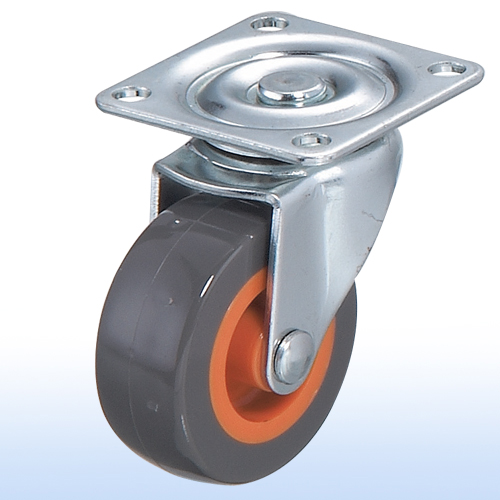 橡膠輪
橡膠輪
橡膠輪
輕型腳輪
2”x 7/8 平板活動輪
型號: T-05
2”x 7/8 Flat-plate Swivel Caster w/Brake
隨著科技的不斷發展和應用需求的變化,橡膠輪在未來有望繼續取得進步和創新,展現更多潛力和功能。以下是橡膠輪的未來展望:
智能化與自動化:隨著智能技術的普及和應用,橡膠輪將更多地與智能裝置和自動化系統相結合。橡膠輪將成為具有感知、控制和自主運動能力的裝置,實現更高效、智能的運輸和操作。
材料創新:未來將不斷研發更先進的橡膠材料,以提高橡膠輪的性能和耐用性。新型材料可能具有更優越的耐磨性、抗油性、耐高溫性和耐化學性能,從而擴大橡膠輪的應用範圍。
環保與可持續性:未來將更加關注橡膠輪的環保性能和可持續性。推動使用綠色、可回收、可再生的橡膠材料,並加強回收再利用舊輪子,以減少對環境的影響。
設計創新:在設計上,未來的橡膠輪可能會更加注重實用性和人性化。設計更符合人體工學的輪胎形狀和手柄,提供更舒適的使用體驗。
多功能輪子:未來的橡膠輪可能會集成更多功能,例如電動助力、遙控操控、折疊收納等,使其更具多樣化的應用場景。
【對社會的影響】:
橡膠輪的進步和創新將對社會產生多方面的影響:
提高工作效率:智能化和自動化的橡膠輪將能夠更高效地進行運輸和操作,提高生產效率和工作效率。
降低能耗:更先進的材料和技術可以降低橡膠輪的能耗,減少能源浪費,對能源環保具有積極作用。
促進創新產業發展:橡膠輪的創新將促進相關產業的發展,如智能裝置制造、橡膠材料研發等,帶動產業升級和轉型。
提升生活品質:橡膠輪的改進將影響人們的生活方式,提供更方便、舒適的家居環境和日常工具。
總體來說,橡膠輪作為一種基礎的工業元件,在未來將繼續受到重視並得到不斷改進和創新。透過科技進步和環保意識的提高,橡膠輪將更好地適應社會需求,為各行各業帶來更多的便利和效益。
橡膠輪是由橡膠材料制成的輪子,通常用于車輛、機器和設備中的運動部件,以減少摩擦和震動。橡膠輪可分為實心橡膠輪和充氣橡膠輪兩種類型。實心橡膠輪通常由一塊實心橡膠制成,用于較小的載重和速度較慢的應用中。橡膠輪具有耐磨、耐油、耐腐蝕等優點,是許多應用中的理想選擇
橡膠輪是一種常見的車輪類型,它是由橡膠材料製成的圓形結構,通常在其周圍具有紋理或花紋,以增加其抓地力。而實心橡膠輪是指輪胎內部沒有充氣空間的一種橡膠輪子,因為它們不需要充氣,所以在某些應用中比充氣輪更適合,例如需要承受重量和耐磨的應用。
實心橡膠輪主要用於推車、手推車、叉車等載重工具的車輪上,因為它們能夠承受較大的負載,並且不需要定期檢查和充氣,減少了維護的時間和成本。此外,實心橡膠輪也可以用於工業機械設備、農業機械和建筑機械等領域。
儘管實心橡膠輪有許多優點,但它們也有一些缺點。例如,與充氣輪相比,它們的運動和減震能力較差,所以在某些應用中可能會影響操作的平穩度。此外,在不平坦的地面上行駛時,實心橡膠輪會比充氣輪產生更多的震動和噪音。
橡膠輪的特性、應用與市場趨勢
一、橡膠輪的基本概念
橡膠輪是一種廣泛應用於工業、商業及日常生活的輪子類型,主要由橡膠製成,並配合不同的輪架與軸承設計,以滿足各種負載與環境需求。由於橡膠具有良好的彈性、減震性與耐磨性,因此橡膠輪能有效降低震動與噪音,保護地面並提升移動設備的穩定性。
橡膠輪可依照不同的需求分為實心橡膠輪與充氣橡膠輪:
實心橡膠輪:由整塊橡膠製成,耐磨且不易刺破,適合重工業、倉儲、物流等領域。
充氣橡膠輪:內含氣體,能提供更好的減震效果,適合崎嶇不平的地面,如建築工地、農業機械等。
二、橡膠輪的優勢與特性
橡膠輪因其優異的物理特性,被廣泛應用於不同領域。主要優勢包括:
良好的減震與緩衝效果
橡膠具有出色的彈性,可以有效吸收震動,減少設備受到的衝擊力,特別適用於運輸精密儀器或易碎品。
降低噪音
與金屬輪、塑膠輪相比,橡膠輪在行駛時能有效降低噪音,使工作環境更安靜,適用於醫療設備、辦公設備等需要靜音的場合。
保護地面
由於橡膠具有一定的柔軟性,能夠減少對地面的磨損,適合使用於木地板、大理石等精緻地面,不易留下刮痕。
耐用且承重力適中
橡膠輪具有良好的耐磨性與一定的承載能力,能適應長時間使用,特別適合中等負載需求的行業,如物流倉儲、超市貨架等。
適應多種環境
橡膠輪能夠適應不同的地形,如室內光滑地面、戶外粗糙地面或潮濕環境,並且部分橡膠輪可具備抗油污、抗腐蝕等特性,適合工業環境使用。
三、橡膠輪的主要應用領域
工業設備
橡膠輪廣泛應用於工業推車、物流搬運設備、工廠生產線等場景,能夠提升設備的移動效率,並減少搬運過程中的震動損害。
醫療與商業設備
由於橡膠輪的靜音特性,常被應用於醫療推車、病床、超市購物車、飯店行李推車等,確保行駛過程順暢且不影響周圍環境。
建築與農業機械
在崎嶇或不平整的地面上,充氣橡膠輪能有效提升移動穩定性,適用於建築工地的設備、農業機械如拖車、耕耘機等。
運動與娛樂設備
橡膠輪亦應用於滑板、滑輪鞋、嬰兒推車、健身器材等,提供良好的抓地力與舒適的騎乘體驗。
四、橡膠輪的市場需求與未來發展趨勢
隨著全球工業與物流產業的發展,橡膠輪的市場需求持續增加,未來幾年將呈現以下趨勢:
環保與可持續發展
環保意識提升後,製造商開始研發可回收或可生物降解的橡膠材料,以降低對環境的影響。此外,使用低污染的生產工藝也成為趨勢之一。
高性能材料與技術創新
隨著科技進步,許多企業開始開發更耐磨、更耐高溫或更具特殊功能的橡膠輪,如防靜電橡膠輪、耐油橡膠輪,以滿足特殊產業的需求。
智能化與自動化應用增加
在自動化物流與智慧工廠中,橡膠輪將與感應技術結合,例如用於自動引導車(AGV)、機器人搬運系統等,提高物流效率。
客製化市場成長
由於不同產業的需求各異,企業越來越傾向於客製化橡膠輪,例如根據特定需求調整橡膠的硬度、耐磨性或耐高溫能力,以符合特定應用場景。
五、選購橡膠輪時的考量因素
在選擇橡膠輪時,應考慮以下幾個因素,以確保最佳的使用效果:
承載能力:根據設備的重量選擇合適的橡膠輪,以避免輪子變形或損壞。
使用環境:若需在潮濕或油污環境下使用,應選擇防滑、防油的特殊橡膠輪。
輪徑與寬度:較大的輪徑能提供更好的移動性能,而較寬的輪胎則能增加穩定性與承載力。
固定式或萬向式:固定式輪子適合直線移動,而萬向輪則能提高靈活性,需根據設備的運行需求選擇。
六、結論
橡膠輪因其良好的減震、靜音、耐磨與保護地面的特性,在各行各業中扮演著重要角色。隨著科技發展與市場需求變化,橡膠輪的應用範圍將持續擴大,並向高性能、環保與智能化方向發展。在選購橡膠輪時,企業應根據實際需求選擇合適的類型與規格,以提升設備的運



